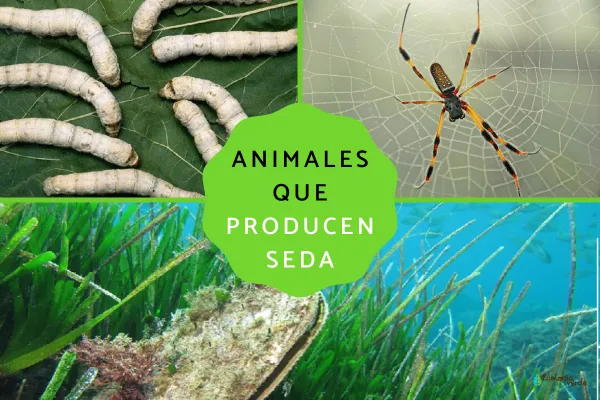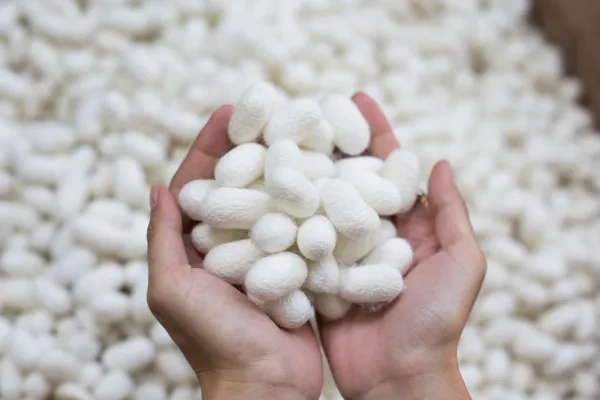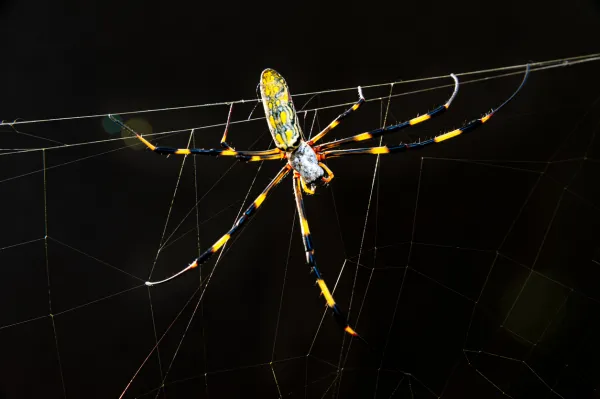Natural silk is a highly valuable and coveted material. In the textile industry, it stands out for its soft touch, unparalleled drape, and signature sheen—alongside its thermal properties, hypoallergenic nature, and moisture absorption abilities.
It might seem like silk is the perfect fabric. Every time a celebrity shows up in shimmering silk on the red carpet, many of us feel the temptation to splurge on this luxurious material. But is silk truly the best fabric out there? Are there more ethical or superior alternatives? In this article, we explore the fascinating world of animals that produce silk and uncover the real source behind this precious material.

Silk is a natural protein fiber produced by certain animals and spun into threads or textiles. The fabric made from these fibers is also called silk, known for its luster, lightness, softness, elegance, and breathable quality. It's a prized raw material for high-end fashion.
Most of the world’s silk comes from silkworms of the species Bombyx mori, although other insects, arachnids, and even mollusks can also produce silk used for various purposes.

Silkworms (Bombyx mori) are domesticated insects originally descended from wild silkworms (Bombyx mandarina). They primarily feed on white mulberry leaves (Morus alba) and, due to domestication and selective breeding, have lost their ability to fly. Their complete metamorphosis takes about six weeks—from a 2mm hatchling to an 8cm-long caterpillar before forming a cocoon.
Originally from Asia, silkworms have been bred for thousands of years to harvest silk. Today, they are raised globally, with both high-tech industrial methods and traditional artisanal practices still in use.
One cocoon can produce 300 to 1,200 meters of silk filament. Making a single scarf requires the cocoons of 1,000 to 2,000 silkworms.
Silkworms are extremely delicate and need strict care—clean environments, controlled temperatures, and plenty of fresh mulberry leaves.
To extract silk, cocoons are boiled with the larvae still inside, preventing the moth from breaking the cocoon during emergence and damaging the thread. After boiling, the filaments are extracted, spun, bleached, dyed, dried, and then woven into fabric.
Some silkworms that are not harvested continue metamorphosis into moths. These adult moths live for 5–15 days solely to reproduce. A female lays 200–600 eggs, which are preserved until the next season begins.
If you want to learn more about insects like these, read our articles on What Are Insects and The Life Cycle of a Butterfly.

Golden orb-weaving spiders (Nephila spp.) are venomous arachnids found in the Americas, Africa, Asia, and Oceania. They produce silk with a natural golden hue that gives them their name.
Their silk is exceptionally strong, elastic, and biodegradable—making it a subject of interest in biotechnology and sustainable materials. However, commercial spider silk production is not economically viable due to the small amount each spider produces and their territorial nature. Some collectors assert the spiders aren’t harmed and are returned to the wild after harvesting.
To learn more about arachnids, check out our guide: Arachnids: Characteristics, Types, and Examples.

The noble pen shell (Pinna nobilis) is a large bivalve mollusk native to the Mediterranean Sea. It’s now critically endangered, but was once known for producing “sea silk” or “mermaid silk”—a rare, luxurious fiber collected from the shell’s byssus threads.
Sea silk is light, soft, and has a golden or brown sheen. It is considered one of the most exclusive fabrics in the world, with only a handful of traditional weavers still practicing this craft.
Learn more in our article: Mollusks: Characteristics, Types, and Examples.

Traditional animal-derived silk is not vegan and has drawn criticism from animal rights organizations due to the killing of silkworms during harvesting. There are two main reasons to consider silk alternatives:
Producing one silk garment can involve the death of thousands or even millions of silkworms.
Silk is expensive—often 10 to 100 times more costly than cotton or polyester.
Ahimsa Silk (Peace Silk): Harvested after the moths emerge naturally from their cocoons, so no animals are killed. It’s cheaper and of slightly lower quality than traditional silk but cruelty-free.
Lotus Silk: A plant-based silk made from the fiber inside lotus stems (Nelumbo nucifera). It's soft, elastic, and up to 10 times more expensive than regular silk. Currently produced only in Myanmar, Vietnam, and Cambodia.
Rayon (Viscose): A synthetic fiber derived from cellulose. It's affordable, breathable, and closely resembles silk in texture and appearance.
Acetate: Made from cellulose acetate, this synthetic fabric mimics silk's smooth texture and shiny finish.
Silk may be luxurious, but understanding its origin sheds light on its ethical and environmental implications. With today's advances in textile technology, there are plenty of sustainable, animal-friendly alternatives that offer the same beauty without cruelty.
As consumers, we can make conscious choices—opting for fabrics that align with our values while still embracing elegance and comfort.
Recommended Reading:
[The Insect Kingdom: Diversity and Importance]
[Types of Spiders and Their Silk Abilities]
[What Are Mollusks? Fascinating Marine Invertebrates]
For more animal and nature content, be sure to check out our full range of articles in the Wild Animals section of our website.
animal tags: Produce Silk Animals
We created this article in conjunction with AI technology, then made sure it was fact-checked and edited by a Animals Top editor.